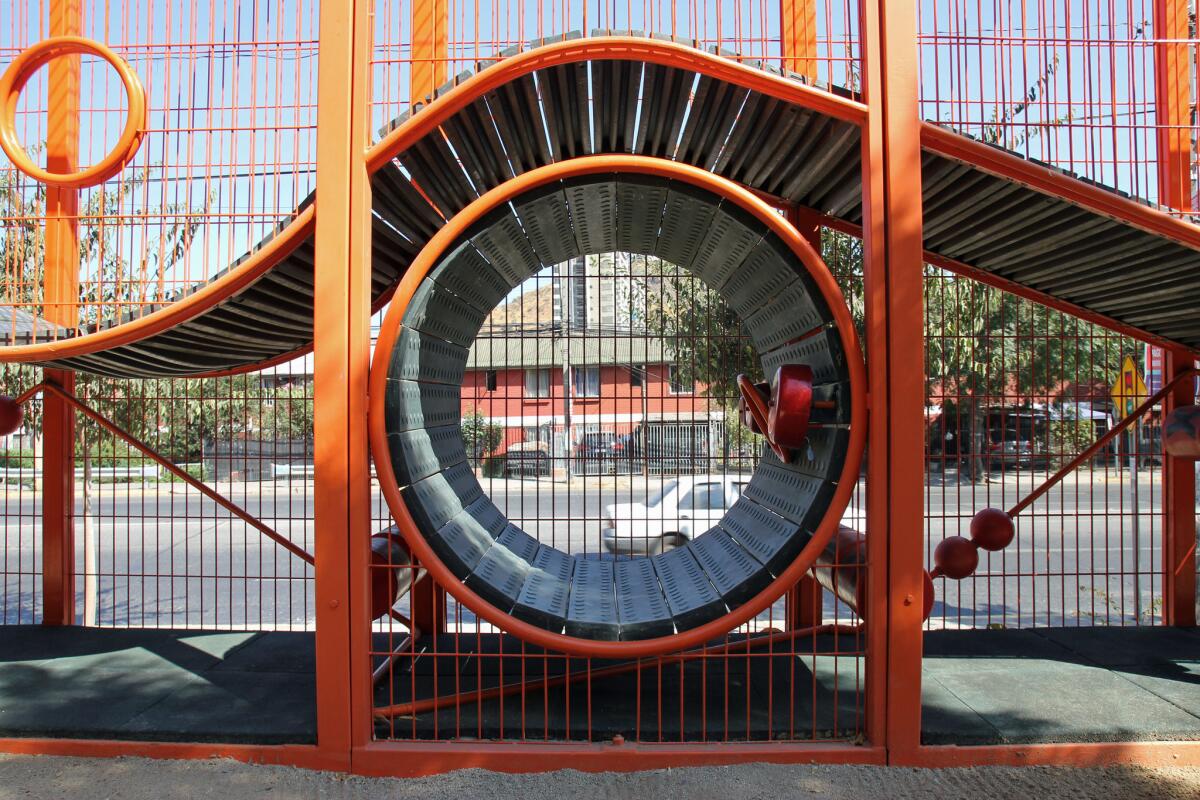Photos: A park by Elemental in Santiago makes a play zone out of a hillside

- Share via
One in a series of dispatches by Carolina A. Miranda on the architecture of Chile.
At first glance, it doesn’t seem like the sort of setting that would make a good park: a steep hillside bordering a car-choked thoroughfare in a heavily urban part of Santiago. But Chilean architecture firm Elemental found a way to work with the terrain — and produced a compelling play area in the process.
Playgrounds are tucked in along fences and narrow pathways. There is a water feature, studded with concrete orbs, and small forts, that extend out from the hillside, providing views of the areas below (and allowing toddlers to feel like the kings of their own castles). But the showstopper is a funicular that leads to the top of the park and a set of 60 concrete slides that tumble down the side of the mountain — allowing kids to get from top to bottom on their bums.
Led by architect and Pritzker Prize juror Alejandro Aravena, Elemental is one of Chile’s most prominent firms, known for producing a variety of designs: office towers, houses, educational buildings and social housing. But increasingly, it is extending into areas that blur the borders between urban planning, architecture and landscape architecture. Its Bicentennial Children’s Park (Parque Bicentenario de la Infancia), as the park is called, is a prime example.
More significantly, the park doesn’t waste a single square foot of space.
The 10-acre site is situated on a steep hillside of the San Cristobal Mountain in the urban district of Recoleta in Santiago. Every nook and cranny accommodates one feature or another: a small flat contains swings, a narrow pathway leads to the fort structures, which extend off the hillside so that they don’t take up valuable land, and the fence that surrounds the park also serves as a unique jungle gym.
And, of course, there are all those slides — which take full advantage of the slope in a playful, but also a conscientious way. Rather than bulldoze a flat into the side of the mountain, the architects worked with the land as it was, creating a unique and whimsical play space in the process.
I photographed the park early in the morning, when it was empty. But by late afternoon, it was teeming with toddlers (the park is geared at very young children) — a welcome and lively oasis in the middle of frenetic Santiago.
Plataforma Urbana has additional pictures (with kids!). And Plataforma Arquitectura has images of the park when it was first completed in 2012. Since the trees had not yet grown in at that point, it is easier to make out the various design features.
Find me on Twitter @cmonstah.
More to Read
The biggest entertainment stories
Get our big stories about Hollywood, film, television, music, arts, culture and more right in your inbox as soon as they publish.
You may occasionally receive promotional content from the Los Angeles Times.











